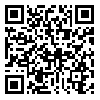BibTeX | RIS | EndNote | Medlars | ProCite | Reference Manager | RefWorks
Send citation to:
URL: http://jhosp.tums.ac.ir/article-1-86-en.html
Methods: A comparative study in 1389 was conducted. In order to compare the evaluation results of hospital information system with other software, applications were selected that already were evaluated using isometric questionnaire. These software are a) IS-H * med (software evaluated by Hamburg and colleagues in 2004), b) SAP-HR (software evaluated by Gruber 2000) and c) Microsoft word for Windows (software evaluated by Gediga and colleagues in 1999). Users view analyzed through descriptive statistical and one sample t-test. Data analyzed through SPSS and Excel.
Results: HIS than IS-H * med of is significantly more usable. HIS than SAP-HR in terms of the IsoMetric Scales such as "suitable for task," "suitable for learning", "Error tolerance" and "learning ability" is significantly more usable. HIS vs. Microsoft's word is significantly less usable.
Conclusion: The results of this study showed that hospital information system in Iran than the other software studied is average level in terms of ergonomic software quality. It is recommended regarding user expectations when designing and developing of information systems.
Received: 2010/08/3 | Accepted: 2011/01/24 | Published: 2013/08/6
| Rights and permissions | |
 |
This work is licensed under a Creative Commons Attribution-NonCommercial 4.0 International License. |





